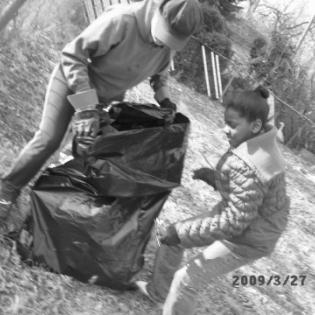Molehill or Mountain
In this lesson, we learn about landfills and the global and local management of trash.
The learner will:
- define landfill and describe the current practices for trash management.
Instructions
Anticipatory Set:
Ask the learners to guess on average how many pounds of trash each person generates each day. (According to the EPA, each person generates approximately 4.9 lbs of municipal solid waste per day. About 32% is recycled or composted.)
Talk about what we throw away in a trash can or recycling bin, including packaging, boxes, paper, plastic, food waste, and more.
Ask what they already know about what happens to that trash when it leaves our homes.
To find out whether they have an accurate picture of the process, examine the process from a garbage truck to a landfill. Here is one site about how landfills work.
Landfills keep our communities clean, and they are engineered to process waste with maximum efficiency and minimal environmental impact. But there are still problems:
- We create a lot of trash.
- Landfills may leak poisons into the water system.
- Landfills cover a lot of space that could be home to wildlife and make the space unattractive and smelly.
- Noxious gases are released into the air in the process.
- They decrease land value.
- They are often built in places where people have lower incomes.
Draw a cross-section of a landfill and label it with features and hazards.
Discuss and make a group list of ways we can reduce how much trash we create and throw in a landfill. Examples:
- We can make careful decisions about what we throw away. Maybe something can be fixed instead of getting thrown away.
- We can buy groceries with a plan to eat them all instead of throwing them away.
- We can shop for foods that aren't packaged. This may include healthy fresh foods.
Brainstorm simple actions people can take to reduce the amount they throw away. Each person makes an advocacy poster to share one action idea with the community. This guide helps with making effective advocacy posters.
This guide helps people use reusable water bottles.
Discuss common areas where they see trash accumulate. Brainstorm things they can do to make people aware of the issue and take better care of shared spaces.
Philanthropy Framework
-
Strand PHIL.II Philanthropy and Civil Society
-
Standard PCS 01. Self, citizenship, and society
-
Benchmark MS.4 Describe the characteristics of someone who helps others.
-
-
Standard PCS 03. Philanthropy and Economics
-
Benchmark MS.3 Give examples of <i>opportunity cost</i> related to philanthropic giving by individuals and corporations.
-
Benchmark MS.9 Recognize problems different communities encounter using a "commons" and possible solutions.
-
-
Standard PCS 05. Philanthropy and Government
-
Benchmark MS.3 Identify the relationship between individual rights and community responsibilities.
-
Benchmark MS.6 Describe how the founding documents and fundamental democratic principles encourage citizens to act philanthropically.
-
-
